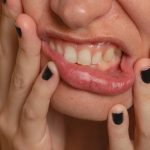
Dr. Arthur Mikaelian, a Los Angeles–based scientist and entrepreneur, has spent decades advancing research at the intersection of biotechnology, quantum biology, and medical innovation. As founder and CEO of a biotechnology company launched in 2007, Arthur Mikaelian, PhD, develops peptide-based therapies derived from Caribbean scorpion venom to support regenerative medicine, oncology, virology, and tissue rejuvenation. His patented polarization technology enhances the potency of active compounds in both natural and synthetic forms, contributing to breakthroughs in areas such as neuronal repair and anti-aging therapies. Dr. Mikaelian’s research, published in peer-reviewed journals and supported by multiple patents, emphasizes safe, effective, and humanitarian approaches to medical science. Drawing from this foundation, he explores how simple daily habits can naturally support tissue rejuvenation at home and promote the body’s intrinsic capacity for renewal.
Natural Ways to Promote Tissue Rejuvenation at Home
Gentle daily habits at home help the body activate its natural healing capacity and promote tissue rejuvenation. Consistent nutrition and support promote cellular renewal, whether in the skin or beneath. Over multiple repair cycles, cellular metabolism and microcirculation restore tissue strength and flexibility.
Circulatory health often serves as a focal point for those seeking natural rejuvenation. Movement helps distribute nutrients and remove trash from underlying layers. Relaxed walking or basic stretches increase blood flow, which helps regeneration cells receive micronutrients and supports the body’s recovery without strain.
Dietary choices quietly shape the environment for tissue restoration. Nutritious foods, including leafy greens, citrus, and seeds, provide antioxidants and compounds that support collagen production. This subtle but crucial role of water delivering nutrients supports tissue flexibility and turnover. These diets increase tissue texture and resilience over the course of weeks.
Sleep occupies a central place in natural healing, fostering conditions for growth hormones to activate rebuilding mechanisms. Each rest phase puts the body in a repair mode, allowing tissues to heal faster. Sleep interruptions slow tissue renewal, emphasizing the need for a quiet, restful nighttime environment.
Massage practices, especially self-massage using basic techniques, help mobilize fluids and foster relaxation. Gently pressing certain places improves lymphatic drainage, nutrition diffusion, and tightness. Hand stimulation improves scalp health by increasing circulation, which helps follicles and nearby tissues develop and repair, according to hair restoration literature.
Moisturizing routines, using plant-derived oils or balancing creams, shield fragile tissues from excess dryness and external irritants. Jojoba and almond oils protect cells for proper turnover and are similar to human sebum. These techniques strengthen the skin’s natural barrier, retaining moisture in epidermal cells to improve suppleness and renewal.
Mild exposure to sunlight, timed to avoid peak hours, enables the body to synthesize vitamin D. Calcium absorption and skin and muscle renewal depend on this molecule. Sun protection and sun time management have modestly improved tissue healing rates. However, their effects are most noticeable on overall health.
Natural tissue rejuvenation benefits significantly from activating stem cells, the body’s internal repair agents. Nutrient-rich diets, such as those rich in antioxidants like berries and leafy greens, help reduce oxidative stress that impairs stem cell function. Additional lifestyle approaches, such as intermittent fasting and regular exercise, stimulate stem cell release and migration to damaged tissues, enhancing the body’s ability to renew itself.
Green tea infusions and foods rich in polyphenols have gained recognition for their capacity to counter oxidative stress, a key factor in slowing tissue renewal. Consuming these substances frequently reduces inflammation and stabilizes cellular membranes, facilitating continuous regeneration in environmentally stressed tissues.
Addressing stress is seldom prioritized, yet the interplay between psychological balance and physical healing is increasingly evident. Heightened cortisol levels, often the result of ongoing stress, can impair cellular repair mechanisms and alter growth cycles. Habits that promote calmness, such as writing or focused breathing, have been linked to reduced levels of stress hormones, thereby indirectly improving the environment for tissue recovery.
A pattern emerges over time. Daily practices gradually foster a biological environment in which cells can rebuild themselves. These continuous efforts build tiny changes over weeks and months, integrating nutrition, rest, movement, water, and mindfulness into a permanent regeneration strategy.
Tissue rejuvenation reflects how daily choices constantly interact with the body’s biology rather than existing as a set of separate steps or technical fixes. The most meaningful changes often arise from the quiet background of daily routines, where the discipline of gentle care – rather than the pursuit of immediate transformation – sets the foundation for resilient, naturally restored tissue. This broader viewpoint encourages an appreciation for steady, accumulative improvements rather than fleeting results.
About Arthur Mikaelian
Dr. Arthur Mikaelian is a Los Angeles–based scientist, entrepreneur, and biotech innovator. He serves as CEO of a biomedical company developing peptide-based therapies derived from Caribbean scorpion venom for applications in regenerative medicine, oncology, and virology. Holding multiple patents and a PhD in biological neuropsychology, Dr. Mikaelian has published research on tissue rejuvenation and drug development. His work focuses on advancing safe, effective treatments through polarization technology and humanitarian-driven innovation in medical science.












